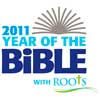Baptist minister and writer, Alec Gilmore, suggests that to assess the impact of the King James Version on the dissenting tradition we need to remove some of the myths that surround its origins

The context
English Dissent goes back to Wycliffe in the 14th century, reflecting a long and persistent attempt to break away from Rome in favour of a radically different way of understanding and interpreting the gospel. For 300 years before 1611, well before Gutenberg and the Reformation, Bible-reading was popular. The Bible was the book of the people, never the exclusive possession of any particular institution or social class, and became a holy book not because of any church diktat, but because people wanted to read it.
The KJV was little more than a staging post in a long era of dissent in which the English Bible was a mark of Protestantism and a distinct line of demarcation from Catholicism. It arrived on the crest of a wave, from Wycliffe to Tyndale, and caught the wind of change among dissenting Catholic scholars, who were beginning to work on biblical texts in the original languages, and among Protestants, who were quarrying original texts to enhance their understanding of Hebrew by drawing upon the scholarship of Jewish communities. In other words, the KJV was a Protestant product feeding on enlightened Catholicism and traditional Judaism. This helps to explain the conflict that greeted it.
The conflict
Previous translations of the Bible had mostly been the work of a single individual, carrying no wider authority. The controversy that prefaced the new translation focused on three issues in relation to each existing translation:
1 Was the translation from the original languages and did it have scholarly approval?
2 Did it contain notes and comments with particular theological or ecclesiastical emphases?
3 Did it carry the imprimatur of the Church, the State (or the king), or neither?
Tensions arose due to the enormous popularity of the Geneva Bible (1560), the work of a group of Puritans in Geneva, with a good knowledge of Greek and Hebrew. It was adopted as the Bible of the Reformers, Calvin and John Knox; the first to be printed in Roman type, and with numbered verses, maps, tables and notes – the ideal ‘study Bible’. It became the household Bible of English Protestants, but its puritan ethos was too strong for some and it lacked the support of the church establishment for others.
When James I came to the throne (1601), bringing with him Scottish Calvinism and a more-than-average degree of theological nous, he wanted to bridge the gap between the more traditional English Protestants (aka defenders of the Church) and those Protestants (or Puritans) looking for more radical reform. His ‘solution’ was the Hampton Court Conference (1604), at which leading churchmen and theologians proposed a new translation from the original texts, without marginal notes and suitable for divine worship.
By 1611, Protestant dissent was part of a wider intellectual movement seeking unsupervised access to the Bible without fearing a charge of heresy; traditionalists (mainly the Church of England) wanted to control the text and muzzle the heretics. Hampton Court marked ‘a rout of…the official puritan representatives’ with ‘game, set, and, eventually, match for the conservative wing of the Church of England’. (Ferrell, The Bible and the People, p.78)
The spirit of Geneva
Fortunately for the Dissenters (and contrary to popular opinion), the KJV was never ‘authorised’, had a poor reception, was not universally loved, and was under constant sniping from Romans and Puritans alike. Today’s Authorised Version is not the original KJV, but a revised version printed in 1769. It only acquired the title of ‘Authorised Version’ in 1824. It received no serious recognition until the middle of the 19th century, it has no claim to be inerrant and, although it very quickly saw off the Geneva Bible and the Bishops’ Bible, its success was more the result of political, commercial and distribution factors than its popularity, and definitely not its accuracy as a translation.
Revision, however, had to wait for the Revised Version (1881). Again, the Protestants made all the running; again, the Church maintained its hold; and again, the result was generally acknowledged to be a failure, but by this time the wind was blowing the other way. Thanks to more recently discovered Greek and Hebrew manuscripts, the Revised Version was closest to the original texts and judged, therefore, to be the translation most suitable for study.
Two other groups of dissenters also continued the spirit of Geneva. Protestants in America, unencumbered by the printing restrictions of the UK, produced a plethora of new translations for all sections, groups and purposes within society. And the Second Vatican Council (1962–1965) promoted increasing attention to biblical study in the Roman Church, to accompany the development of vernacular liturgy.
Dissent may have lost the battle in 1611 and not altogether won it in 1881, but by the end of the 20th century the spirit of Geneva was very much alive and kicking. A plethora of translations and paraphrases was in circulation for nearly every group in existence, with no question of the Church controlling text or notes, all of which bears witness to the spirit of Geneva, that ‘the Lord has yet more light and truth to break forth from his word’.
You are welcome to reproduce this article within your church or organisation.
Please ensure that the copyright line 'This resource is taken from www.rootsontheweb.com and is copyright © ROOTS for Churches Ltd 2011.' is included.
You can find out more about the Year of the Bible on the website www.2011trust.org.
 Go to index of all ROOTS
Go to index of all ROOTS
Year of the Bible 2011 material